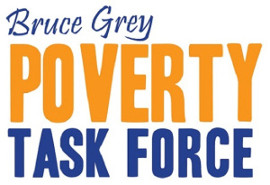Staff
 The Ontario government is launching a pilot project to study how giving people a basic income might reduce poverty and improve health, housing, and employment outcomes in Ontario.
The Ontario government is launching a pilot project to study how giving people a basic income might reduce poverty and improve health, housing, and employment outcomes in Ontario.
The province released a Discussion Paper by Honourable Hugh Segal in June 2016 entitled Finding a Better Way: A Basic Income.
The Ontario government has been holding public consultations, online surveys, and welcomed feedback from the public and professionals working in social services including:
-
The Bruce Grey Poverty Task Force have provided input on the Pilot at various consultations.
-
Members of the Poverty Task Force and Community Voices participated in the Hamilton Consultation hosted by the Ontario government on November 22nd, 2016.
-
Members of the Poverty Task Force participated in the OMSSA consultation.
-
Members of the Poverty Task Force, its Action Groups and Community Voices held their own stakeholder consultation on January 13. The Poverty Task Force has submitted the summary of this discussion as an Official Submission to the Ontario government.
The Bruce Grey Poverty Task Force works with over 34 agencies, networks, and key community stakeholders in Bruce and Grey Counties to enhance their common understanding of poverty-related issues through solution-based research, knowledge development, and information sharing.
“We are informed by diverse voices of experience, and support poverty reduction local action through our action groups and Community Voices,” said the task force. “The Bruce Grey Poverty Task Force supports the government’s initiative to investigate a Basic Income Guarantee as a strategy for reducing poverty and income insecurity. The Bruce Grey Poverty Task Force (Poverty Task Force) envisions the revitalization of our rural communities where people are empowered to reach their goals, are able to afford to participate in our community, where a more robust economic development and local investment will reverse the rise of precarious work, loss of benefits to families and out-migration of youth/young families in our communities.”
The Poverty Task Force recognizes the Basic Income Pilot as one component of a poverty reduction strategy but they recommend that the government continue to invest in new job opportunities, reduce precarious work, and ensure sufficient income wages and benefits.
“We recognize that the government can’t afford to provide all income supports and that we will need the private sector paying a living income. We need to move away from “maintaining poverty”,” said the task force. “The Poverty Task Force believes that the stigmatization of people on social assistance needs to stop. Providing people with more resources and the choice in how they spend their money will provide a sense of community by levelling the playing field.”
The task force suggests that the government should to continue to build broad public support in the media and our rural communities for the Basic Income Pilot.
“The Pilot needs to be a concept easy enough to understand by all people. The government needs to build trust with those people who would transition from Ontario Works/Ontario Disability Support Program to the Pilot, and identify champions for the Pilot from middle-class/wealthy economic levels that will support the Pilot over the next three years,” said the task force.
By the numbers:
-
20% of families in Owen Sound-Georgian Bluffs and 41% of lone-parent families earn a median income of only $15,590 – half of Statistic Canada’s Low Income Cut-off for a family of four. (Stats Can)
-
Over the past three years, food bank usage across Grey and Bruce Counties has increased by 92%, compared to the Canadian average of 26% since 2008. (United Way Bruce Grey Hunger Report 2015)
-
55.3% of those seeking housing assistance in Bruce County are at risk of being homeless. (Bruce County Long Term Housing Strategy, 2013-23)
-
1 in 6 children under age 18 live in poverty in Ontario. That is 18.8% of children under the age of 18 living in poverty (LIM-AT) (Stats Can, July 2016)
-
1 in 5 children under 6 live in poverty in Ontario. (Stats Can, July 2016)
-
1 in 7 families with children live in poverty in Ontario. Poverty rates differ greatly amongst different types of families. Among couples with children, 9.2% live in poverty, while the rate of lone parent families living in poverty is at 30.4%. This stark difference can be partially attributed to the gender pay wage gap in Ontario. (CANSIM 111-0011 Family characteristics, by family type, family composition and characteristics of parents, annual CANSIM)











